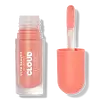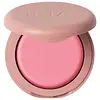What's inside
What's inside
 Key Ingredients
Key Ingredients

 Benefits
Benefits

 Concerns
Concerns

 Ingredients Side-by-side
Ingredients Side-by-side

Dimethicone
EmollientMethyl Trimethicone
Skin ConditioningDimethicone/Vinyl Dimethicone Crosspolymer
Skin ConditioningOctyldodecanol
EmollientSilica
AbrasiveCI 77220
Cosmetic ColorantTrimethylsiloxysilicate
EmollientSynthetic Fluorphlogopite
Sorbitan Isostearate
EmulsifyingTribehenin
EmollientLecithin
EmollientIsopropyl Myristate
EmollientHydroxyapatite
AbrasiveCaprylyl Glycol
EmollientTocopheryl Acetate
AntioxidantPentaerythrityl Tetra-Di-T-Butyl Hydroxyhydrocinnamate
AntioxidantTriethoxycaprylylsilane
Tin Oxide
AbrasiveCI 77891
Cosmetic ColorantIron Oxides
CI 15850
Cosmetic ColorantDimethicone, Methyl Trimethicone, Dimethicone/Vinyl Dimethicone Crosspolymer, Octyldodecanol, Silica, CI 77220, Trimethylsiloxysilicate, Synthetic Fluorphlogopite, Sorbitan Isostearate, Tribehenin, Lecithin, Isopropyl Myristate, Hydroxyapatite, Caprylyl Glycol, Tocopheryl Acetate, Pentaerythrityl Tetra-Di-T-Butyl Hydroxyhydrocinnamate, Triethoxycaprylylsilane, Tin Oxide, CI 77891, Iron Oxides, CI 15850
Mica
Cosmetic ColorantTapioca Starch
Synthetic Fluorphlogopite
Silica
AbrasiveCaprylic/Capric Triglyceride
MaskingSqualane
EmollientEthylhexyl Palmitate
EmollientGlycerin
HumectantEthylhexylglycerin
Skin ConditioningLauroyl Lysine
Skin Conditioning1,2-Hexanediol
Skin ConditioningGlyceryl Caprylate
EmollientDehydroacetic Acid
PreservativeBoron Nitride
AbsorbentXanthan Gum
EmulsifyingTin Oxide
AbrasiveLeontopodium Alpinum Callus Culture Extract
AntioxidantAlaria Esculenta Extract
Skin ProtectingTocopherol
AntioxidantCI 77163
Cosmetic ColorantCI 77891
Cosmetic ColorantCI 77491
Cosmetic ColorantCI 77492
Cosmetic ColorantCI 77499
Cosmetic ColorantCI 15850
Cosmetic ColorantCI 17200
Cosmetic ColorantCI 19140
Cosmetic ColorantCI 77007
Cosmetic ColorantCI 15985
Cosmetic ColorantCI 16035
Cosmetic ColorantCI 45410
Cosmetic ColorantMica, Tapioca Starch, Synthetic Fluorphlogopite, Silica, Caprylic/Capric Triglyceride, Squalane, Ethylhexyl Palmitate, Glycerin, Ethylhexylglycerin, Lauroyl Lysine, 1,2-Hexanediol, Glyceryl Caprylate, Dehydroacetic Acid, Boron Nitride, Xanthan Gum, Tin Oxide, Leontopodium Alpinum Callus Culture Extract, Alaria Esculenta Extract, Tocopherol, CI 77163, CI 77891, CI 77491, CI 77492, CI 77499, CI 15850, CI 17200, CI 19140, CI 77007, CI 15985, CI 16035, CI 45410
Ingredients Explained
These ingredients are found in both products.
Ingredients higher up in an ingredient list are typically present in a larger amount.
Ci 15850 is the pigment color red. It is an azo dye and created synthetically.
Azo dyes need to be thoroughly purified before use. This allows them to be more stable and longer-lasting.
This ingredient is common in foundations, lipsticks, and blushes. This color is described as brown/orangey red.
It has many secondary names such as Red 6 and Red 7. According to a manufacturer, Red 6 usually contains aluminum.
Learn more about CI 15850Ci 77891 is a white pigment from Titanium dioxide. It is naturally found in minerals such as rutile and ilmenite.
It's main function is to add a white color to cosmetics. It can also be mixed with other colors to create different shades.
Ci 77891 is commonly found in sunscreens due to its ability to block UV rays.
Learn more about CI 77891Silica, also known as silicon dioxide, is a naturally occurring mineral. It is used as a fine, spherical, and porous powder in cosmetics.
Though it has exfoliant properties, the function of silica varies depending on the product.
The unique structure of silica enhances the spreadability and adds smoothness, making it a great texture enhancer.
It is also used as an active carrier, emulsifier, and mattifier due to its ability to absorb excess oil.
In some products, tiny microneedles called spicules are made from silica or hydrolyzed sponge. When you rub them in, they lightly polish away dead skin layers and enhance the penetration of active ingredients.
Learn more about SilicaSynthetic Fluorphlogopite is the synthethic version of mica. It consists of fluorine, aluminum and silicate.
Synthetic Fluorphlogopite is used to add volume to products.
It is considered non-irritating on the skin.
Learn more about Synthetic FluorphlogopiteTin Oxide is an inorganic oxide used to add opacity and volume to a product. In nature, it is already found in mineral form. The main ore of tin is an opaque and shiny mineral called casseterite.
Tin Oxide helps remove translucency in a product, or make it more opaque. Besides adding opacity, tin oxide is used for bulking to add volume.